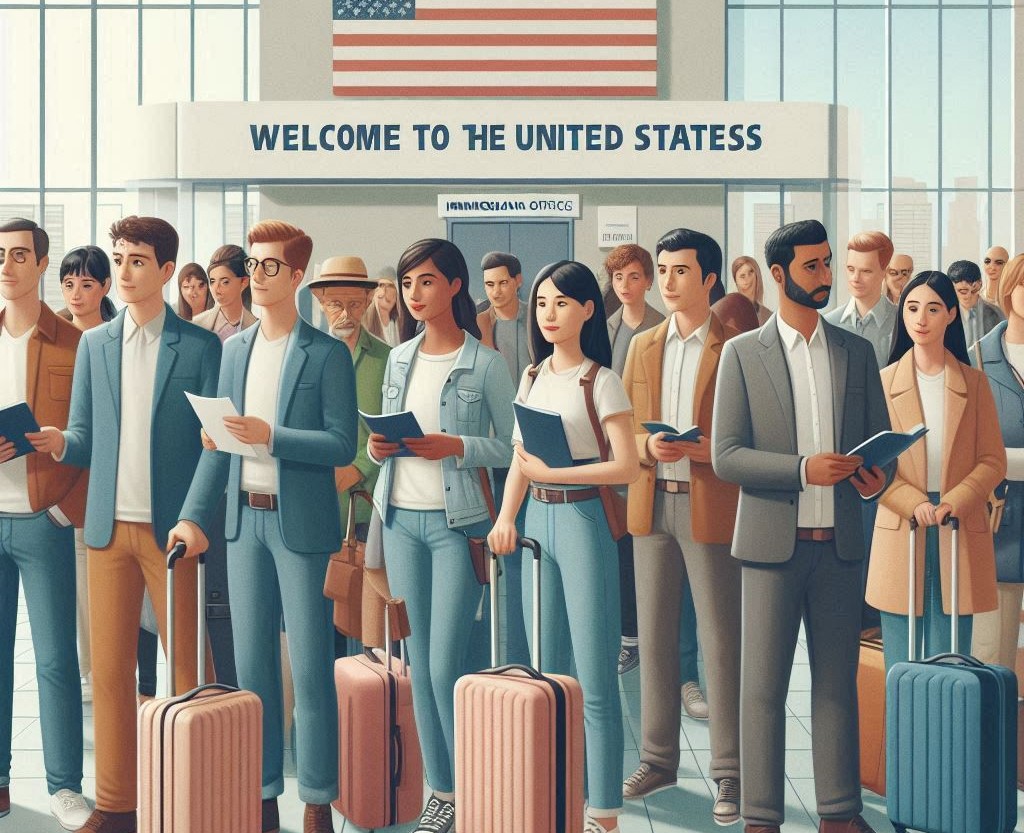The way people come to the U.S. is changing a lot. It’s getting harder to get visas, and it’s more expensive too. This blog is here to help you understand what’s going on.

We’ll talk about the new rules, how to get work visas like the H-1B, and what to do about the higher fees. We’ll also explore what it means to come to the U.S. as an immigrant now, when things are uncertain but also full of possibilities.
Policy Overhaul – a New Dawn for Migration in America
Changes in the law affect how people move from one place to another. This year, there are big changes coming. The rules are getting stricter and more selective. Companies that hire people from around the world should pay attention to these changes and adjust their plans. To stay ahead, it’s important to know about:
- Changes in the law called the Immigration Reform and Control Act 2024.
- Improvements in who can come to the country and how they’re checked.
- Changes to the EB-5 Investor Visa Program, which lets people invest in the U.S. to get a visa.
Understanding these changes can help companies adjust their plans and find opportunities. It’s like seeing the map clearly, so you know where you can go and what you need to watch out for.
H-1b Visa Reforms – Bridging Opportunity With Compliance
In the last ten years, people have been really looking closely at the H-1B visa program. They keep changing the rules to try and get the right balance between bringing in talented people from other countries and making sure there are still enough job opportunities for people who already live here.
In 2024, there are going to be some new changes to the rules. These changes will affect things like how much employers have to pay H-1B visa holders, what kinds of jobs qualify for the visa, and whether visa holders can plan to stay in the US permanently.
It’s important to understand these changes if you’re hiring people from other countries or if you want to keep your current employees happy.
Fee Hikes – the High Cost of Migration
In the past, immigration was seen as a great way to bring in talented people and expand markets worldwide. But in 2024, it’s becoming more expensive. Fees are going up, which is making people think differently about whether it’s worth it to move.
If you look at the numbers, you’ll see how much more money is being spent on immigration, especially for things like faster processing, adjusting your status, and hiring key employees. Understanding these costs is really important for HR managers who want to do business in the U.S.
The Path Less Trodden – Immigration Alternatives in 2024
Raising fees and changing visa rules might make it harder for some people to come to the US. But it also creates new chances for different kinds of visas. There’s more than one type of visa you can apply for, like:
- The O-1 visa for really talented people
- L-1 visa for transferring within a company
- E-2 visa for investors from certain countries
This part gives you different options to think about when planning to move to the US in 2024.
Anticipating Change – Preparing for Immigration Regulations of the Future
Being flexible and thinking ahead are really important because immigration rules are always changing. Here’s what we can help you with:
- How using technology can change how visas are handled.
- Using data to guess how people might move around and planning for it.
- Making sure you follow the rules even when they keep changing.
If you keep these things in mind when planning how your workers move around, dealing with immigration in the US in 2024 can be a chance to rethink and improve how your workforce operates.
Understanding these changes will help your organization and your workers be ready for whatever comes up, so you can keep growing in the US.
Your Partner in Navigating Change – Caprelo
At CapRelo, we understand that making sure your workers move smoothly around the world is really important for your plans to be successful. We promise to do a great job and use smart ideas to help you deal with all the complicated rules and costs of moving people.
If you work with us, we’ll help you handle the challenges of U.S. immigration both now and in the future, so your business can grow and do well.
FAQs
1. What are the anticipated changes in US immigration policies in 2024 and beyond?
Immigration policies are expected to undergo revisions, possibly focusing on aspects such as visa regulations, pathways to citizenship, and border security measures. Keep abreast of updates from relevant governmental agencies for precise details.
2. How might these changes impact aspiring immigrants?
Depending on the nature of reforms, aspiring immigrants could experience alterations in application processes, eligibility criteria, or waiting times. Staying informed and seeking guidance from immigration experts is advisable to navigate any changes effectively.
3. Will there be new opportunities for skilled workers or students looking to immigrate to the US?
It’s plausible that new avenues could emerge, potentially catering to skilled professionals in high-demand sectors or offering streamlined pathways for students seeking to study and work in the US post-graduation.
Monitoring official announcements and consulting with immigration advisors can aid in identifying these opportunities.
4. Are there any changes expected in family-based immigration policies?
Family-based immigration policies may undergo adjustments, impacting reunification processes and sponsorship requirements. Those with family members in the US or planning to sponsor relatives should stay updated on any modifications to these regulations.
5. How might the geopolitical landscape influence US immigration trends?
Geopolitical factors, such as global conflicts, economic conditions, and diplomatic relations, can influence immigration patterns by shaping policy priorities and international agreements. Being aware of these broader dynamics can provide insights into potential shifts in US immigration trends.